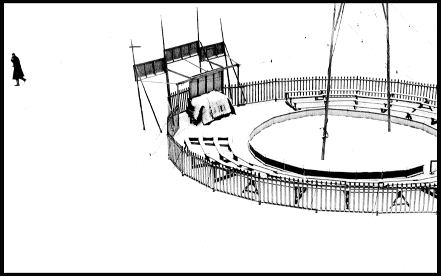|
by Sandro Pintus
|
How has photography changed from the fifties to the present day?
Above all it's the photographers who have changed. With those who entered MISA, Giacomelli, Camisa and me, photography changed. It's the beginning of the documentary standpoints but also of an intimist one. The photographers of de La Bussola carried out research into lighting and form; from MISA up until now began a research into civil photography.
How did you get in to photography?
In the USIS office, an American propaganda organisation that showed films, they had also inserted some American photographers. I learnt to recognise Ansel Adams, Eugene Smith and others. I began thus to get to know foreign photographers because in Florence's National Library, where I lived in those days, there were only Perenti Griva's books.
I began taking photos in 1953 and half way through the fifties I got a first, in Florence, where I got to know the photographers de La Bussola. But since the sixties us photographers have felt the need of professionalism. The post war years had gone and we were on the brink of the economic boom.
What changes would you make?
Camisa, Giocomelli and me were attracted by the south which we barely knew. Therefore we set out on a journey towards the exposition of a different world. We moved closer to a professional attitude through illustrated magazines like the weekly "Epoca". The commitment to civil photography, to culture and social issues came about at this time too. It was also the period in which Pannunzio's Il Mondo hit the streets which printed our photos with great dignity.
|
|
How did you make the transition from photography to journalism?
During my photographic collaborations with illustrated magazines I also wrote the introductory text. They paid me for the text. I then had the opportunity to join RAI because they were increasing the staff. I also did documentaries for television. I passed the exam as a journalist-reporter in the American fashion, that is to say I did the shoot and the piece. For around two years, when I was sent abroad, I was an American-style reporter and Enzo Biagi in 1962 sent me to the then USSR.
How was the Russian experience from a photographic point of view?
I stayed in Russia for four years and did a little of everything. Unfortunately I wasn't able to get to know the reality of Soviet photography but there were some excellent photographers. From the point of view of camera shots it was difficult because you weren't allowed to photograph. I compiled a series of notes on the various locations and people.
What has become of the pictures taken in the USSR?"
I kept the Russian photos in a drawer for 25 years because I didn't want them to be used for political ends. Only in the Eighties did I develop them for an exhibition.
In what kind of photo do you identify yourself?
In the Fifties every photographer headed for the profession that often became photojournalism like Di Biase and Roiter; I've never taken topical or exotic photos. I've always been interested in human beings and the environment in which they live.
How do you perceive photography in the Nineties?
There's the risk of seeing merely the photo while I hope we'll continue to see more and more the photograph. It's important to perceive the spirit of the photograph. The photo becomes secondary.
Go to Exhibition

Photojournalist On Line
Photojournalism and Photography
E-mail:fotoreporter@catpress.com
Via Faentina 127 - 50133 Florence, Italy
ph. +39 55 575488 - fax +39 55 587321
© Photojournalist - All rights reserved

